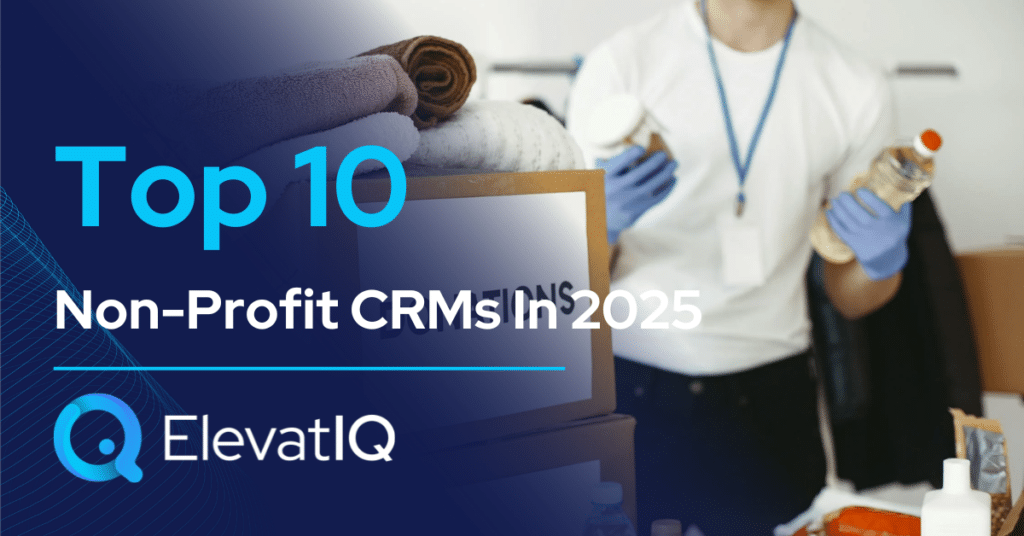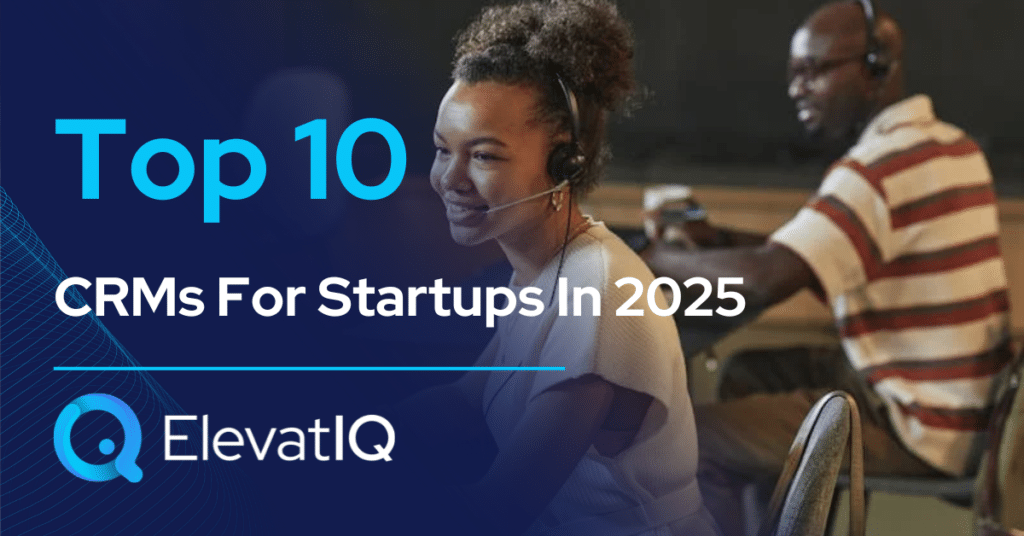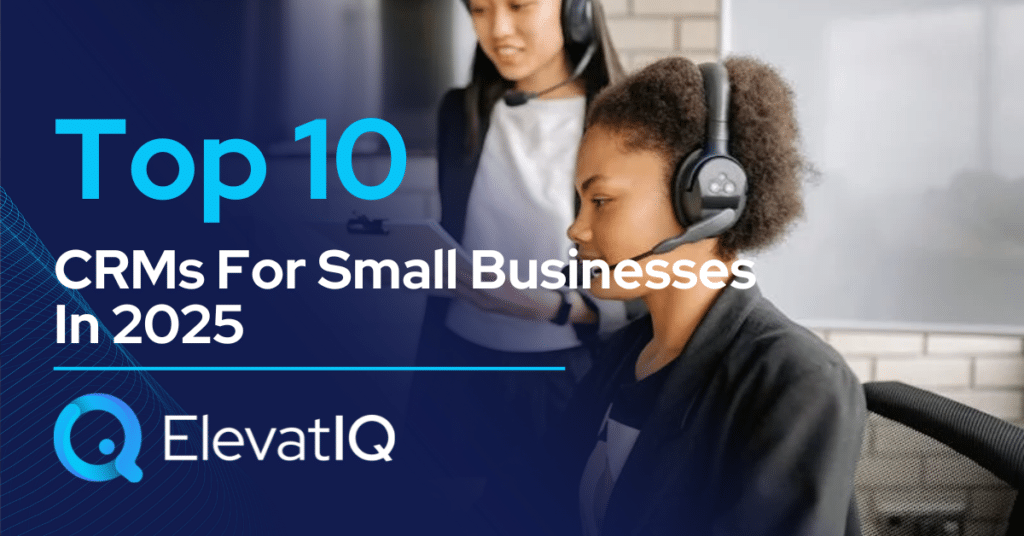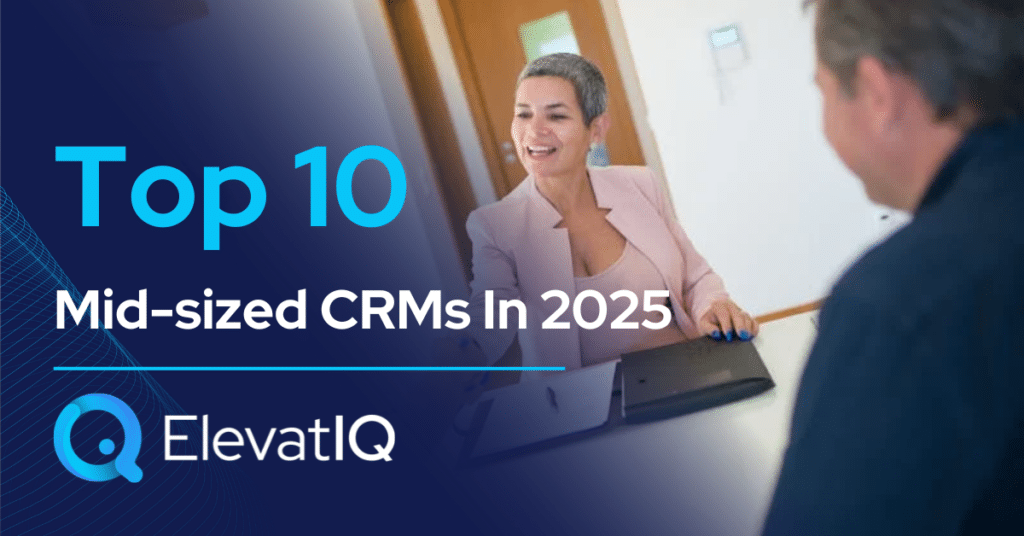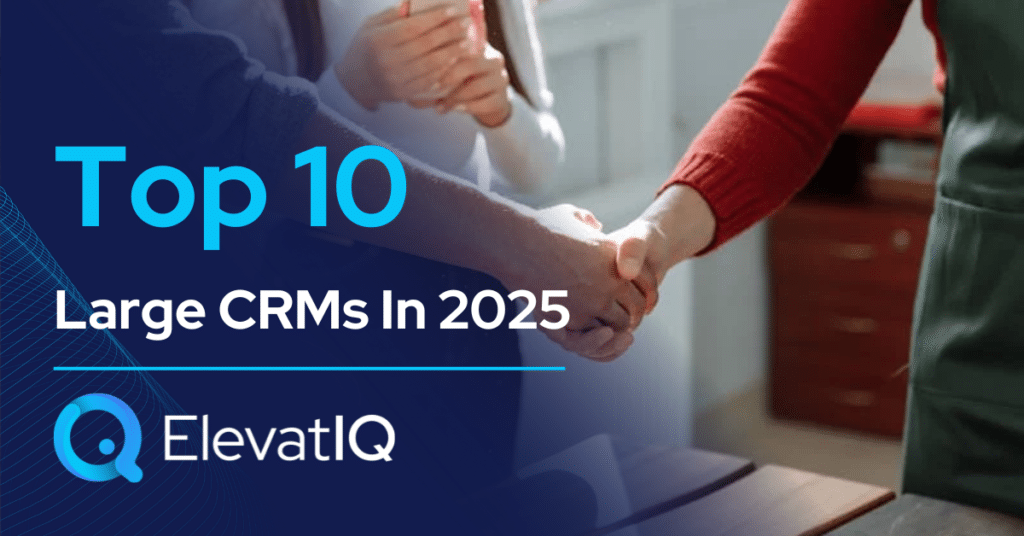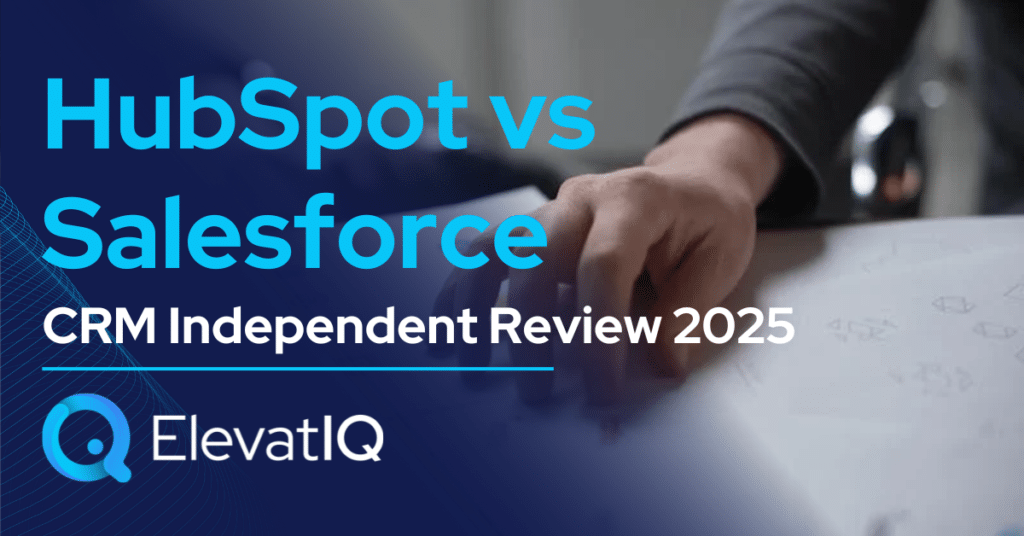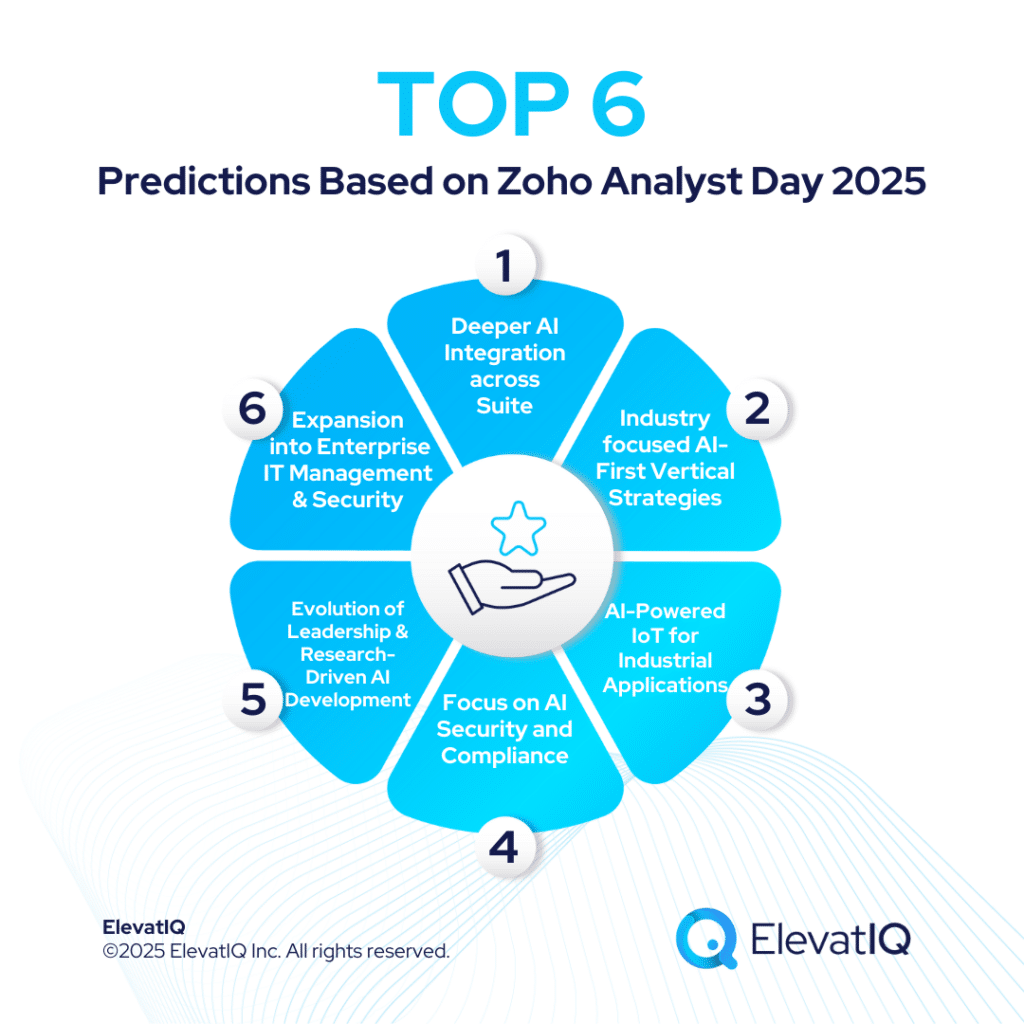Last Updated on April 13, 2025 by Sam Gupta
Defining the needs of non-profit organizations as challenging would be an understatement. Many assume that non-profits are less complex than for-profit businesses due to their perceived lack of extensive commercial transactions. However, non-profits often face even greater challenges because of their fluid processes. These organizations blend various business models, including those typically associated with for-profit sectors like construction, real estate, commerce, education, and more. Their customer-facing operations, diverse audiences, and unique journeys are so varied that consolidating them into a single data model or system can be a significant undertaking.
Perhaps this is why the non-profit sector has access to countless CRM solutions tailored specifically to its needs. While many of these options may seem highly appealing at first glance, each comes with its own set of limitations. The most common challenge lies in addressing the diverse requirements of different non-profits. For instance, many CRMs offer robust grant and fundraising features, but they often lack the scalability needed to support other unique aspects of non-profits, such as operations related to construction, real estate, or education.
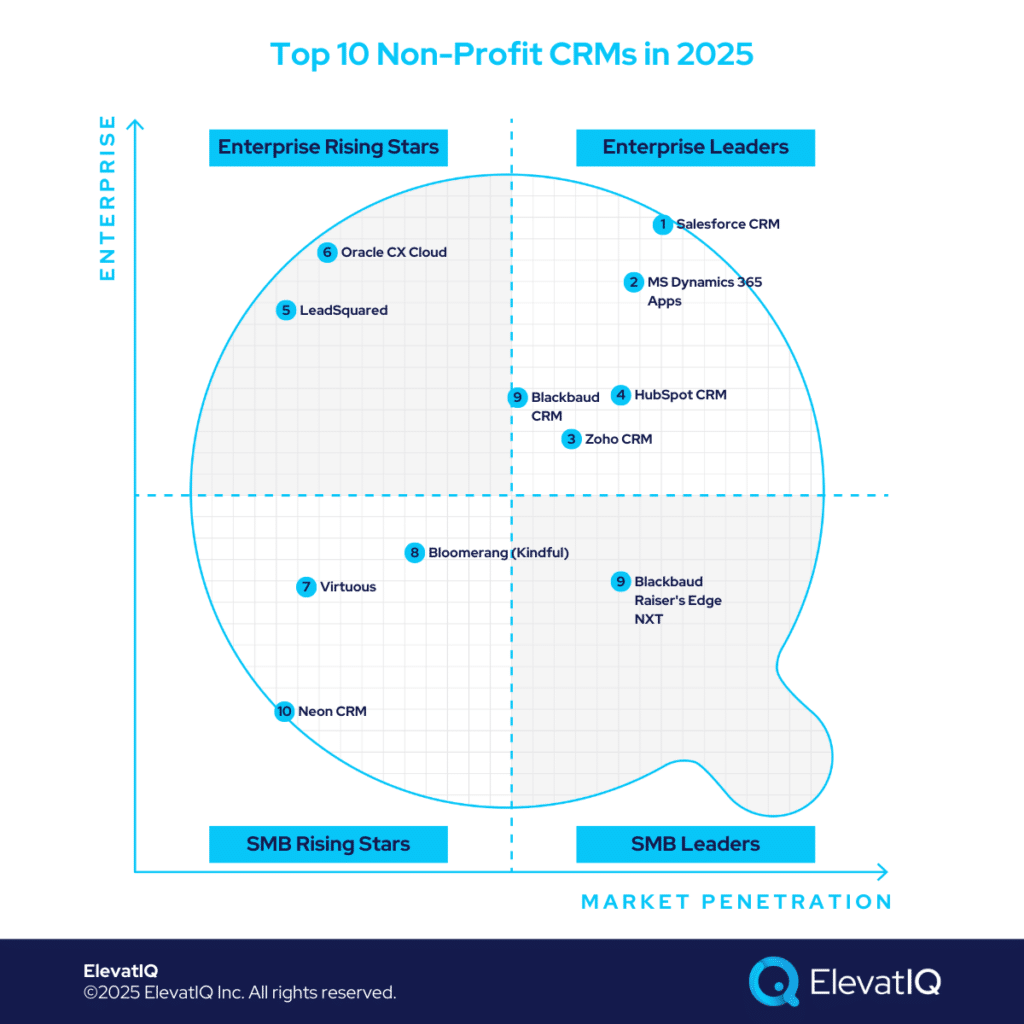
While the other class of CRM solutions offer greater flexibility in supporting diverse business models, they often demand significant consulting efforts, which is generally out of reach for most smaller non-profit organizations. This complexity frequently results in higher failure rates or poor adoption due to skill gaps and insufficient measures to minimize friction or streamline implementation. Moreover, variations in workflows add another layer of difficulty. For example, some non-profits emphasize recruitment and engagement at the initial stages, while others prioritize nurturing existing relationships and facilitating the smooth progression of their constituents. Given these challenges, which non-profit CRMs stand out as the best in 2025?

Criteria
- Definition of a non-profit organization. These are companies of any size in the non-profit ecosystem, such as cities, governments, schools, associations, foundations, charities, churches, charitable subsidiaries of large corporations, etc.
- Overall market share/# of customers. The higher the market share among non-profit companies, the higher it ranks on our list.
- Ownership/funding. The more committed the management to the product roadmap for the non-profit companies, the higher it ranks on our list.
- Quality of development. The more cloud-native capabilities, the higher it ranks on our list.
- Community/Ecosystem. The larger the community with a heavy presence from non-profit companies, the higher it ranks on our list.
- Depth of native functionality for specific industries. The deeper the publisher-owned out-of-the-box functionality, the higher it ranks on our list.
- Quality of publicly available product documentation. The poorer the product documentation, the lower it ranks on our list.
- Non-profit company market share. The higher the focus on non-profit companies, the higher the CRM system ranks on our list.
- Ability to natively support diversified business models. The more diverse the product, the higher it ranks on our list.
- Acquisition strategy aligned with non-profit companies. The more aligned the acquisitions are with the non-profit companies, the higher it rank on our list.
- User Reviews. The deeper the reviews from non-profit companies, the higher the score for a specific product.
- Must be a CRM product. It can’t be a module of an ERP system. It must be a best-of-breed CRM system, preferably recognized in the CRM category by leading analyst firms.
10. Neon CRM
Neon CRM, like other non-profit CRMs, is particularly structured in a very prescriptive way, offering many pre-built capabilities for non-profit workflows. However, just like other prescriptive systems, Neon CRM would be equally constraining, depending on the specific needs of your business model. Neon could be a great fit if you have straightforward business processes for a non-profit with fundraising and maybe simpler programs. More complicated audiences or workflows might be a stretch for Neon CRM. Thus, Neon CRM has secured the #10 spot on our list of top non-profit CRMs.
Strengths
- Built-in fundraising and event registration. The key strengths of Neon CRM lie in its built-in fundraising capabilities, as well as its event registration and event management features.
- Membership management. Membership management can also involve highly complex workflows, which can be a significant challenge to implement and configure on a standard CRM. Neon CRM contains some of these capabilities natively.
- Volunteer scheduling. Volunteers follow a unique data hierarchy, making it difficult to fit in with the existing structure of core and custom objects of standard CRMs. Neon has out-of-the-box capabilities to accommodate unique volunteer workflows.
Weaknesses
- Reporting capabilities. The reporting capabilities are relatively limited. The number of pre-built reports is generally low, requiring you to create custom reports.
- Customizability. The platform lacks extensive customizability, making it a significant challenge to enable certain capabilities if they are not already available in the CRM.
- Scalability beyond simpler business models. Scalability can be a significant challenge. If your CRM needs to accommodate numerous customer experience touchpoints and processes, you may encounter difficulties, leading to using multiple CRMs and resulting in fragmented data and disconnected workflows.
9. Blackbaud Raiser’s Edge NXT/Blackbaud CRM
Blackboard’s Raiser’s Edge and Blackboard CRM are two distinct products aimed at different market segments. Raiser’s Edge is typically suited for smaller organizations, while Blackbaud CRM is designed for larger ones. It’s important to recognize that each product has its own support model, capabilities, and data model, which can vary significantly, even though they are from the same vendor. Hence, it has secured the #9 spot on our list of top non-profit CRMs.
Strengths
- Fundraising capabilities. Both Blackbaud products have been proven in non-profit verticals, requiring relatively robust fund-raising capabilities across several non-profit micro-verticals.
- Events and membership capabilities. It offers strong event and membership capabilities natively.
- Integration with Microsoft Power platform. Blackbaud integrates with the Microsoft Power Platform, enabling you to build custom ad-hoc workflows atop the core CRM data model, which is a unique plus as most non-profit companies require building unique processes.
Weaknesses
- Not great for volunteer management. It is not well-suited for volunteer management, as it lacks the necessary layers to enable complex hierarchies of volunteer management. Adding these features can be challenging, especially since Blackbaud is not as diverse as some other options on this list designed to support complex custom business processes.
- Technology and cloud-native features. The system is quite prescriptive, particularly in terms of its technology and cloud-native features.
- Inconsistency between the on-prem and cloud versions. From a cloud-native perspective, features like enterprise search and mobility capabilities are quite limited. In some cases, you may end up using two different versions of the system. When sophisticated data is required, they may push you towards the on-prem version.
8. Kindful/Bloomerang
Bloomerang is designed for smaller non-profits and is similar to Neon CRM, but it is slightly larger in scale. The vendor is more established, with a greater number of installations overall compared to smaller vendors such as Neon. They are also owned by private equity, which could have its own set of pros and cons. While they will have the financial backing of private equity which might be a risky factor for family-owned products, the support from private equity-owned companies is generally inferior, requiring additional consulting support. Thus securing its spot at #8 on our list of top non-profit CRMs.
Strengths
- Move management. Its robust move management capabilities accommodate different move types and their life cycles.
- Donor cultivation. Its donor cultivation capabilities allow complex workflows related to different donor types and their interactions.
- Easy to use. The suite-centric approach is designed to serve a specific business model, which makes it relatively easier to use due to its flatter data model.
Weaknesses
- Grant tracking. One of the key limitations is grant tracking, as the data layers may not be as detailed.
- Data integrity. Limited constraints at the database level would cause data integrity issues with Bloomerang.
- Not meant for education non-profit. Education non-profits require unique operational layers accommodating the needs of students, teachers, and parents, some custom features that would be challenging to implement on Bloomerang.
- Percentage fee per donation. Per donation fee might be difficult to estimate to compute the long-term TCO and plan.
- Bloomerang payments (recently introduced). Tight coupling with their platform with potentially more expensive payment charges.
7. Virtuous
Virtuous is a prescriptive system similar to Neon CRM and Bloomerang, designed particularly for smaller non-profit organizations. It follows a very prescriptive approach, offering capabilities similar to those of the other systems. While it’s a great fit for smaller non-profit organizations with relatively straightforward needs, it might not be the best fit for larger or complex non-profit organizations. Therefore, it has secured the #7 spot on our list of top non-profit CRMs.
Strengths
- Best of breed capabilities for non-profit. It offers best-of-breed fundraising and volunteer management features.
- Automation journeys. They also offer more automated journeys, which can be quite appealing. However, the data layers may not be as detailed, even though they provide some automation features. The experience will be similar to HubSpot but with less detailed data.
- Integrated payment processing. They also offer integrated payment processing, which can be beneficial if you’re looking for that feature. However, it’s important to consider which vendor they are using and whether you’ll have leverage in negotiating payment rates.
Weaknesses
- Higher price compared to smaller CRMs like Neon. While Virtuous is likely to have more detailed layers and advanced features compared to systems such as Neon, its price tag is generally more expensive.
- Email templates are not user-friendly. Their technology is not as user-friendly as other platforms where business users can design templates without developers’ support.
- Reporting is not as intuitive. Although they may offer some capabilities, they might not be as detailed. Once you start using them, you’ll likely encounter several issues, and the reporting functionality may not be very intuitive. This is another limitation to consider.
6. Oracle CX Cloud
Oracle CX Cloud is ideal particularly for non-profit organizations seeking a scalable solution. It is an enterprise-centric system, so it may not offer all the nonprofit-specific features found in more prescriptive systems. However, if the organization has a complex model with multiple business areas—such as healthcare, real estate, construction, education, and traditional non-profit operations, it can accommodate diverse business models and customer personas. These systems are suitable for non-profits that need to handle different customer journeys across various sectors. Although the implementation budget may increase, Oracle CX Cloud is well-suited for large non-profits that require a scalable, customizable solution without budget constraints. Thus securing the #6 spot on our list of top non-profit CRMs.
Strengths
- Integrated HCM. They offer integrated HCM, so if your HCM processes are closely linked with your CRM processes, you would likely need this feature.
- Integrated CPQ. They also include integrated CPQ and related workflows as part of the system. While non-profit organizations typically don’t have complex CPQ processes, if you do require them—for example, for grants or when calculating donations or proposals with complex variables. You’ll be able to enable these capabilities within the model.
- Customizable for many business models. The underlying data and process model allow supporting most business models and transactions.
Weaknesses
- Expensive consulting to enable non-profit-specific workflows. The scalable data layer to support many business models would require substantial consulting effort to understand and configure diverse business models.
- Steep learning curve. The scalable data layers demand an understanding of data hierarchies not only from the implementation perspective but also for adoption.
- Not meant for SMB companies. If a small non-profit chooses this system, they are likely to face implementation and adoption challenges.
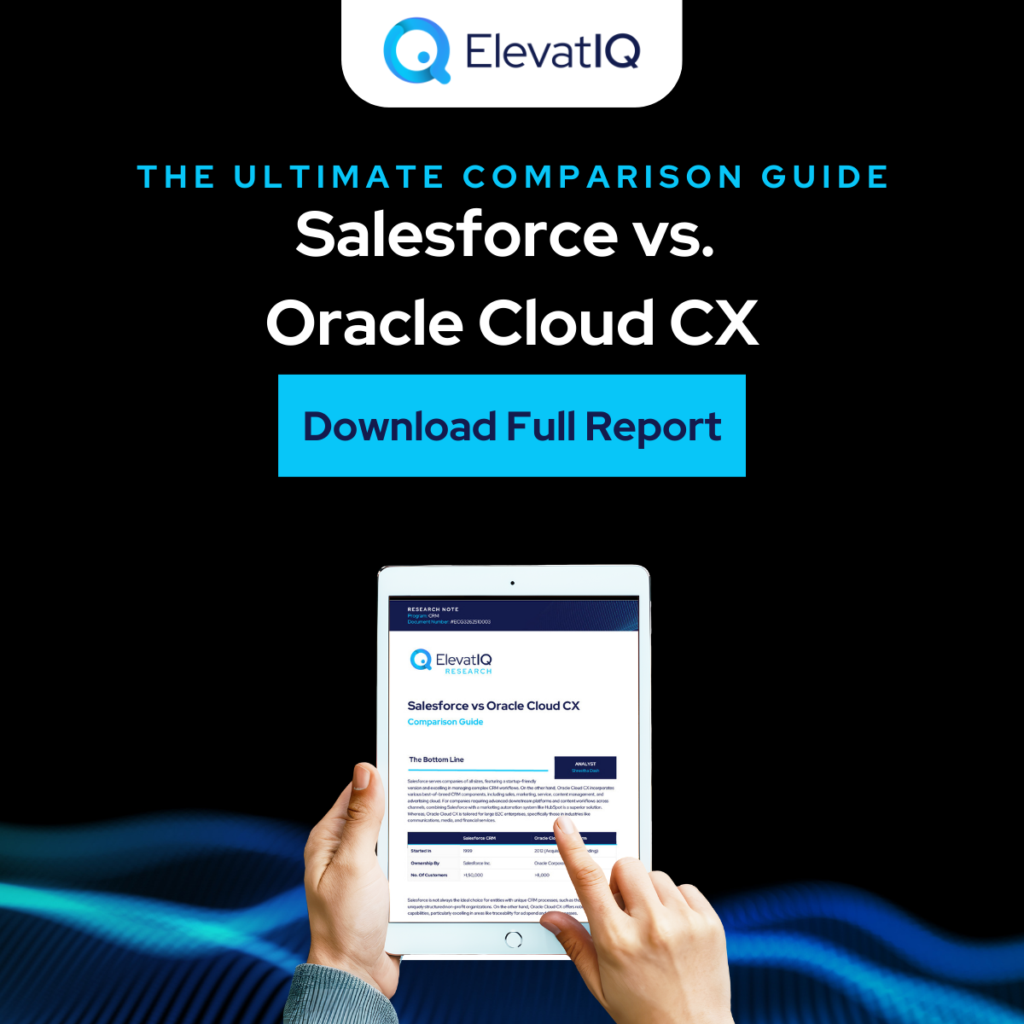
5. LeadSquared
LeadSquared is a prescriptive system tailored to specific industries. It is an excellent fit for organizations with a focused business model, such as those in the public sector or education, as it provides well-established, pre-built functionality for those sectors. The system’s capabilities are proven and tested in similar industries. However, as the organization expands and requires additional features outside the core strengths of LeadSquared, it may outgrow the system. In such cases, limitations may arise as the business model evolves beyond what LeadSquared can support. Thus, it has secured the #5 spot on our list of top non-profit CRMs.
Strengths
- Customizable. Although it is a prescriptive system, it offers more customization options due to its proven success in enterprise workloads and use cases.
- Well adopted among large public sector and education companies. It is widely adopted by large public sector organizations and educational institutions with a strong portfolio of clients. It is well-proven and highly regarded, which serves as a significant validation.
- Student accounts management. For businesses part of the educational institution with complex student information management workflows that need to be closely integrated with CRM workflows, LeadSquared would be an excellent fit for this.
Weaknesses
- Limited security layers. The security layers are limited, as the system is not designed for enterprise-level workflows.
- Portal stability. Since their technology is not as modern as other CRM systems designed for collaboration, their portals struggle with stability and user experience.
- Not as well adopted as a mainstream CRM. While they are proven in the education and public sector, it’s not as recognized and adopted as other mainstream CRM systems such as Salesforce or HubSpot.
4. HubSpot CRM
HubSpot CRM is an excellent choice particularly for non-profit organizations seeking robust CMS capabilities or advanced upstream marketing workflows. While it has great features for non-profits interested in acquiring newer donors or constituents, it might not be the best fit for non-profits managing their Cx operations workflows on the platform because of the limited pre-built layers for non-profits. The generalized layers also have substantial limitations, such as insufficient parent-child relationships, rigid custom objects, and immutable core objects. Hence, it secured its spot at #4 on our list of top non-profit CRMs.
Strengths
- CMS was built with a platform for omnichannel tracking. The biggest plus with HubSpot is its omnichannel traceability, especially across upstream marketing channels for non-profit companies caring for website integration and traceability.
- Ecosystem and integration. Although the ecosystem is rich, non-profit-specific options might be limited.
- Cloud-native technology. Compared to other platforms on this list that grew through the acquisition of legacy technologies, HubSpot was built from the ground up, managing the entire suite with one code base and data model.
Weaknesses
- Limited custom objects. Custom objects are highly constraining in their limited layers, such as parent-child relationships, etc., causing substantial challenges with customization.
- Limited workflow triggers. The workflow triggers are not as detailed as those of platforms such as Salesforce or Zoho, limiting even simpler operations such as CRUD on business objects and causing implementation challenges for non-profits.
- Limited customizability with core objects. Even core objects are substantially limited, such as the inability to remove (or rename) deal objects, especially since most non-profits would require move management capabilities, requiring them to rename or remove deal capabilities completely.
3. Zoho CRM
Zoho CRM is a better fit for transactional use cases. While it may not offer the same depth in upstream marketing automation or CMS capabilities as HubSpot CRM, it excels in operational and transactional features, making it a strong choice for most non-profit sectors. Thus, it has secured the #3 spot on our list of top non-profit CRMs.
Strengths
- Detailed triggers on custom objects. The strengths of Zoho CRM include detailed triggers for custom objects, making it easier to implement non-traditional workflows required by non-profit organizations.
- Price for Zoho One. Zoho One offers a single price point, which makes it easier for nonprofits to calculate their costs. When compared to the pricing of platforms like HubSpot or Salesforce, Zoho CRM offers significantly more value for the same cost, which is a major advantage.
- Customizable layout and screens. The platform offers highly customizable layouts and screens, which is particularly beneficial for nonprofits with complex needs. For scenarios such as grant or fund accounting/reporting where CRMs would host some of these processes along with an ERP system, Zoho CRM may not be as strong due to the limited pre-built layers and complexity in enabling these capabilities.
Weaknesses
- Data model is completely separate for each app. The data model is entirely separate for each app, limiting embeddedness and communication among their apps.
- CMS not as robust as HubSpot. The CMS may not be as robust as HubSpot, and it isn’t as well-known or proven within some ecosystems. As a result, there may be fewer integrations and third-party apps available with Zoho CRM.
- No communication across data centers. Their data centers don’t allow any communication among them, limiting capabilities for non-profits with global operations with a preference to keep data and processes in their respective countries.
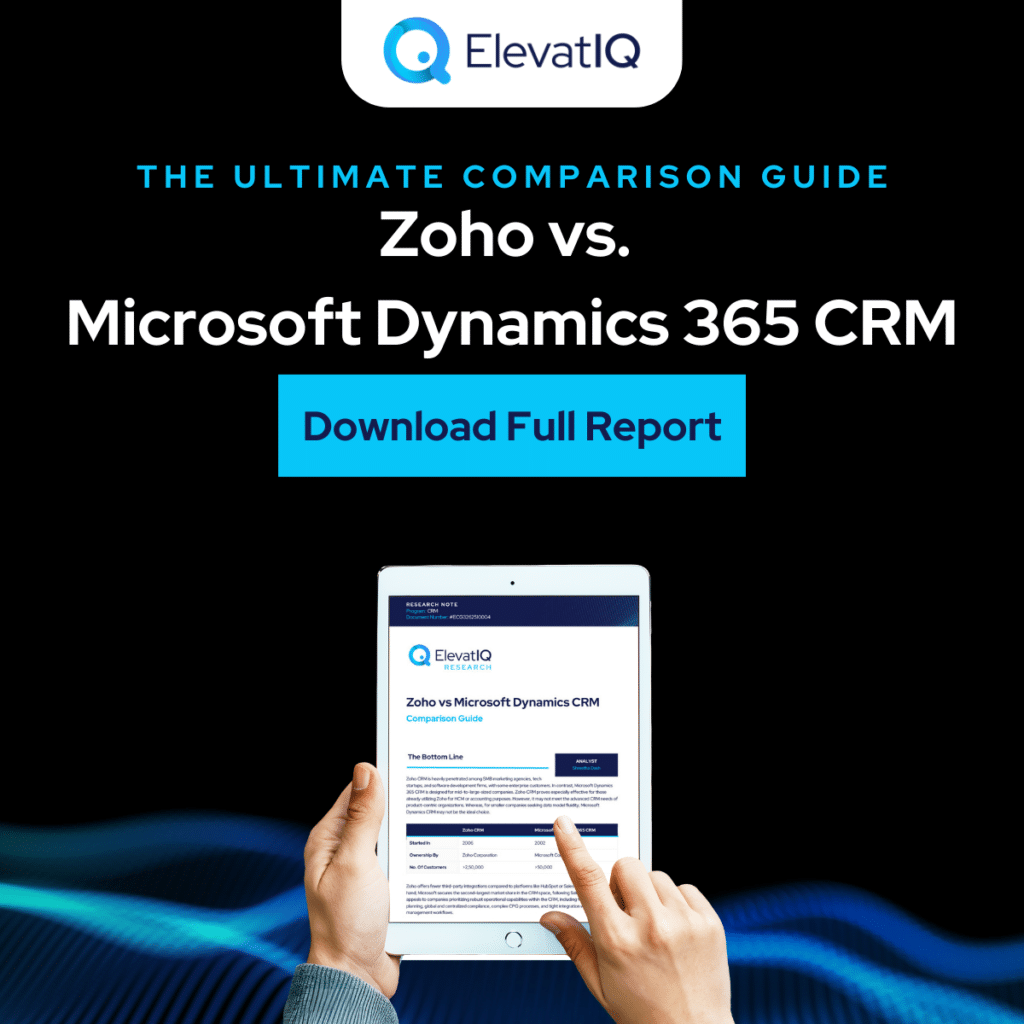
2. Microsoft Dynamics 365 Apps
Microsoft Dynamics 365 CE is ideal for particularly organizations that need a highly customizable CRM. Non-profits, regardless of their market verticals, often require this level of customization due to the complexity of their business models, which is unique compared to other industries. Hence, it has secured the #2 spot on our list of top non-profit CRMs.
Strengths
- Power platform. The power platform is a huge plus for non-profits as it allows building collaborative ad-hoc workflows on top of the core Microsoft platform.
- Data model designed for complex operational use cases. The data model has layered hierarchies to capture real-world relationships, even for the most diverse non-profit companies.
- Ecosystem and integrations. The ecosystem includes apps like Mission CRM, which is built on Microsoft Dynamics 365 CE, offering a prescriptive experience on top of the Microsoft platform.
Weaknesses
- Upstream marketing capabilities. Despite being great for transactional and operational use cases, it might not be the best fit for non-profit companies that are heavier in upstream marketing activities such as website integration and traceability with upstream channels.
- Upstream marketing integrations. While MS has one of the richest ecosystems, the ecosystem is primarily concentrated with operational systems and vendors, limiting integration options with data platforms or ad exchanges.
- Consulting costs. The detailed data layers would require substantial consulting expertise for implementation and adoption.
1. Salesforce CRM
Salesforce is a strong option for large nonprofits in need of an enterprise-grade CRM suite, but it often requires a significant consulting budget. Many best-of-breed components are needed to enable various non-profit workflows, and while the provided service pack can be helpful, it might not fully address all needs. Extending it to fit specific use cases could be challenging, requiring careful planning and expert guidance, such as working with independent CRM or ERP consultants experienced with non-profit CRMs. Non-profits often need deeply integrated capabilities, like fund and grant traceability, which demand a robust data model and also some ERP experience within CRM workflows. Thus, Salesforce secured the #1 spot on our list of top non-profit CRMs.
Strengths
- Pre-populated industry templates. Salesforce offers a service pack with non-profit-specific native business objects, reducing implementation costs and risks.
- Highly customizable. Just like MS, Salesforce custom objects are highly customizable, exposing a complete development framework above the core platform.
- Enterprise territory planning and sales comp. It offers highly customizable options for enterprise territory planning and sales compensation, along with other related features.
Weaknesses
- Marketing automation products are not as embedded with the core CRM objects. The marketing automation product is not deeply embedded. While there are many CMS players within the Salesforce ecosystem, they would have their own set of challenges, increasing project, implementation, and integration budgets.
- Expensive consulting costs. Salesforce is an enterprise-grade platform that requires a substantial budget for implementation and adoption.
- Website integration would require additional add-ons. Website integration would require additional add-ons, and the experience may not be as immersive as what is offered by other systems, such as HubSpot.
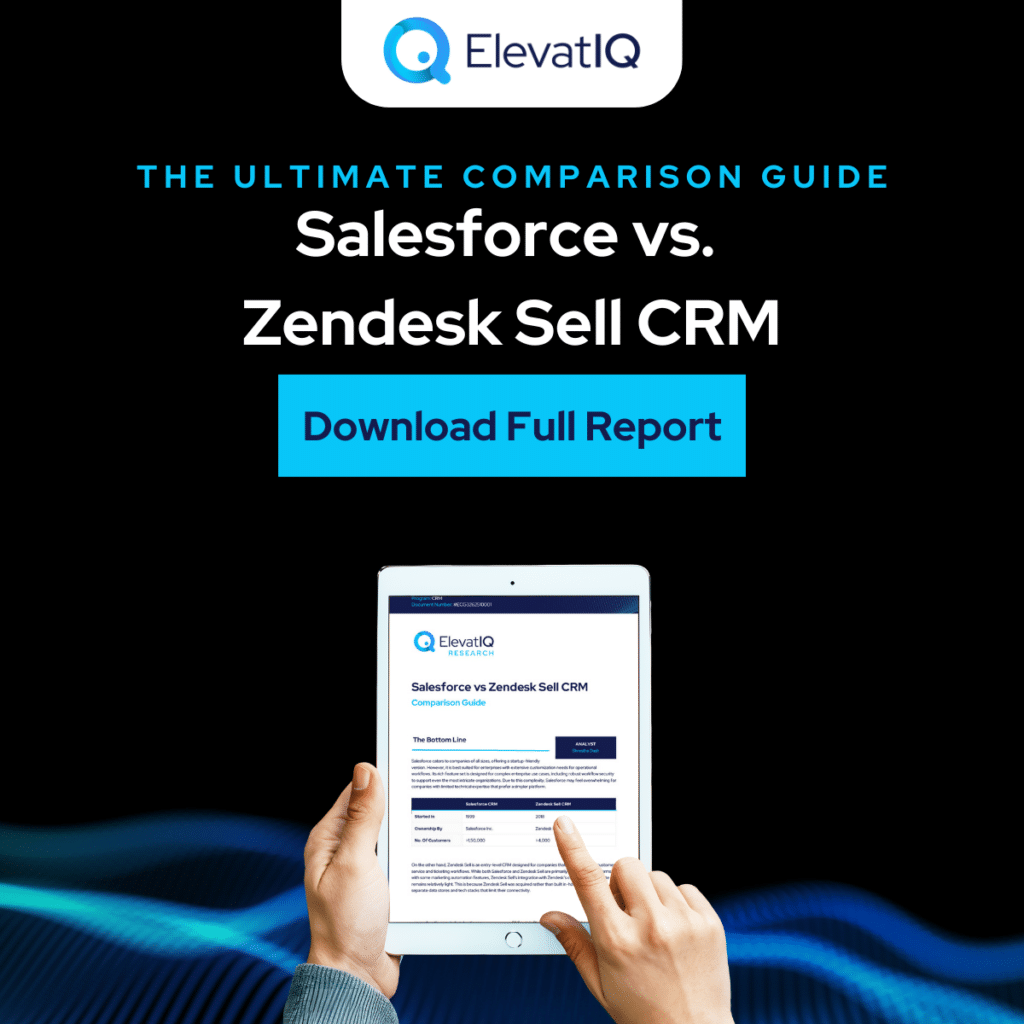
Conclusion
Non-profit organizations face unique challenges that require tailored solutions, particularly when it comes to CRM systems. The top non-profit CRM options reflect a diverse range of strengths and weaknesses, catering to various needs such as fundraising, event management, and operational scalability. Systems like Salesforce and Microsoft Dynamics 365 lead the list for their robust customization capabilities and comprehensive ecosystems, making them ideal for particularly large-scale organizations with complex workflows.
Meanwhile, more prescriptive systems such as Neon CRM, Bloomerang, and Virtuous serve smaller non-profits with straightforward processes, offering ease of use and pre-built functionalities but limited scalability. Options like HubSpot and Zoho strike a balance by providing powerful marketing tools and flexible layouts, albeit with certain limitations in custom objects and data model communication. Ultimately, the choice of a CRM system for a non-profit depends on factors like the size of the organization, the complexity of its operations, and also budget constraints. While this list offers valuable insights, seeking advice from an independent CRM consultant can greatly enhance the implementation success.


